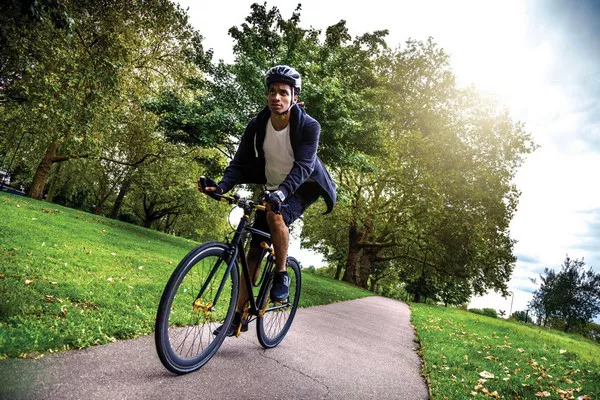Hernias are a common medical condition that occurs when an organ or tissue protrudes through a weak spot in the surrounding muscle or connective tissue. While there are various types of hernias, some individuals may wonder whether it’s safe to engage in physical activities such as riding a bike when dealing with this condition. In this article, we’ll delve into the intricacies of hernias, explore the potential risks and benefits of biking with a hernia, and provide guidance on how to approach cycling while managing this medical concern.
Understanding Hernias:
Before addressing the question of biking with a hernia, it’s crucial to grasp the nature of this condition. Hernias can manifest in different parts of the body, including the abdomen, groin, and diaphragm. The most common types are inguinal hernias, which occur in the groin area, and umbilical hernias, which develop around the belly button. Hernias often result from a combination of factors such as weakened muscles, heavy lifting, persistent coughing, or pregnancy.
Symptoms of a hernia may include a visible bulge, discomfort or pain, especially when lifting objects or straining, aching or burning sensation at the site of the hernia, and a feeling of pressure in the affected area. In some cases, hernias may require surgical intervention to prevent complications such as incarceration or strangulation, where the protruding tissue becomes trapped and blood supply is compromised.
Biking and Hernias: Risks and Considerations:
When it comes to biking with a hernia, individuals must carefully weigh the risks and benefits. Cycling is generally considered a low-impact aerobic exercise that offers numerous health benefits, including cardiovascular conditioning, muscle strengthening, and stress reduction. However, certain factors associated with biking may exacerbate symptoms or pose risks for individuals with hernias.
One concern is the potential strain on the abdominal muscles and pelvic floor while cycling. The repetitive motion of pedaling can place stress on the core muscles, which may aggravate hernia symptoms or increase the risk of hernia recurrence. Additionally, riding a bike in an upright position can cause increased intra-abdominal pressure, particularly if the individual leans forward or engages in vigorous cycling activities such as sprinting or hill climbing.
Another consideration is the risk of injury or trauma to the herniated area. Biking involves dynamic movements and changes in terrain that could lead to accidental falls or collisions. For individuals with hernias, a fall or impact to the abdomen or groin region could result in further damage or complications.
On the other hand, some proponents argue that biking can be a beneficial form of exercise for individuals with hernias, particularly if performed with caution and moderation. Cycling in a controlled manner, maintaining proper posture, and avoiding excessive strain on the abdominal muscles may help alleviate symptoms and improve overall fitness. Additionally, biking allows for customization of intensity and duration, allowing individuals to gradually increase their activity level as tolerated.
Consulting with a Healthcare Professional:
Before embarking on a biking regimen with a hernia, it’s essential to consult with a healthcare professional, preferably one familiar with your medical history and condition. A qualified physician or physical therapist can provide personalized guidance based on the severity of the hernia, individual fitness level, and any underlying health concerns.
During a medical evaluation, the healthcare provider may conduct a physical examination to assess the extent of the hernia and determine its suitability for physical activity. In some cases, additional diagnostic tests such as ultrasound or MRI may be recommended to evaluate the hernia more comprehensively.
Based on the evaluation findings, the healthcare provider can offer recommendations regarding exercise modifications, activity restrictions, and potential treatment options. In some instances, conservative measures such as lifestyle modifications, physical therapy, or wearing a supportive garment (e.g., hernia belt) may be sufficient to manage hernia symptoms and facilitate safe participation in activities like biking.
Tips for Biking with a Hernia:
If cleared by a healthcare professional to ride a bike with a hernia, consider implementing the following tips to minimize risks and optimize your biking experience:
1. Start Slow: Begin with short, low-intensity rides and gradually increase duration and intensity over time.
2. Maintain Proper Form: Focus on maintaining a neutral spine and engaging the core muscles to support the abdomen and pelvis.
3. Choose the Right Bike: Select a bike with an appropriate frame size and adjustable components to ensure a comfortable and ergonomic fit.
4. Use Caution on Rough Terrain: Avoid bumpy or uneven surfaces that could jolt or strain the herniated area.
5. Listen to Your Body: Pay attention to any signs of discomfort or worsening symptoms and adjust your biking routine accordingly.
6. Consider Alternative Activities: If biking exacerbates hernia symptoms or poses too much risk, explore alternative forms of exercise such as swimming, walking, or stationary cycling.
Conclusion
In conclusion, the question of whether you can ride a bike with a hernia is multifaceted and contingent upon individual factors such as the type and severity of the hernia, overall health status, and guidance from healthcare professionals. While biking can offer numerous physical and mental health benefits, it’s essential to approach this activity cautiously and with awareness of potential risks. By consulting with a healthcare provider, adopting appropriate safety measures, and listening to your body, individuals with hernias can make informed decisions about incorporating biking into their lifestyle while effectively managing their condition.

